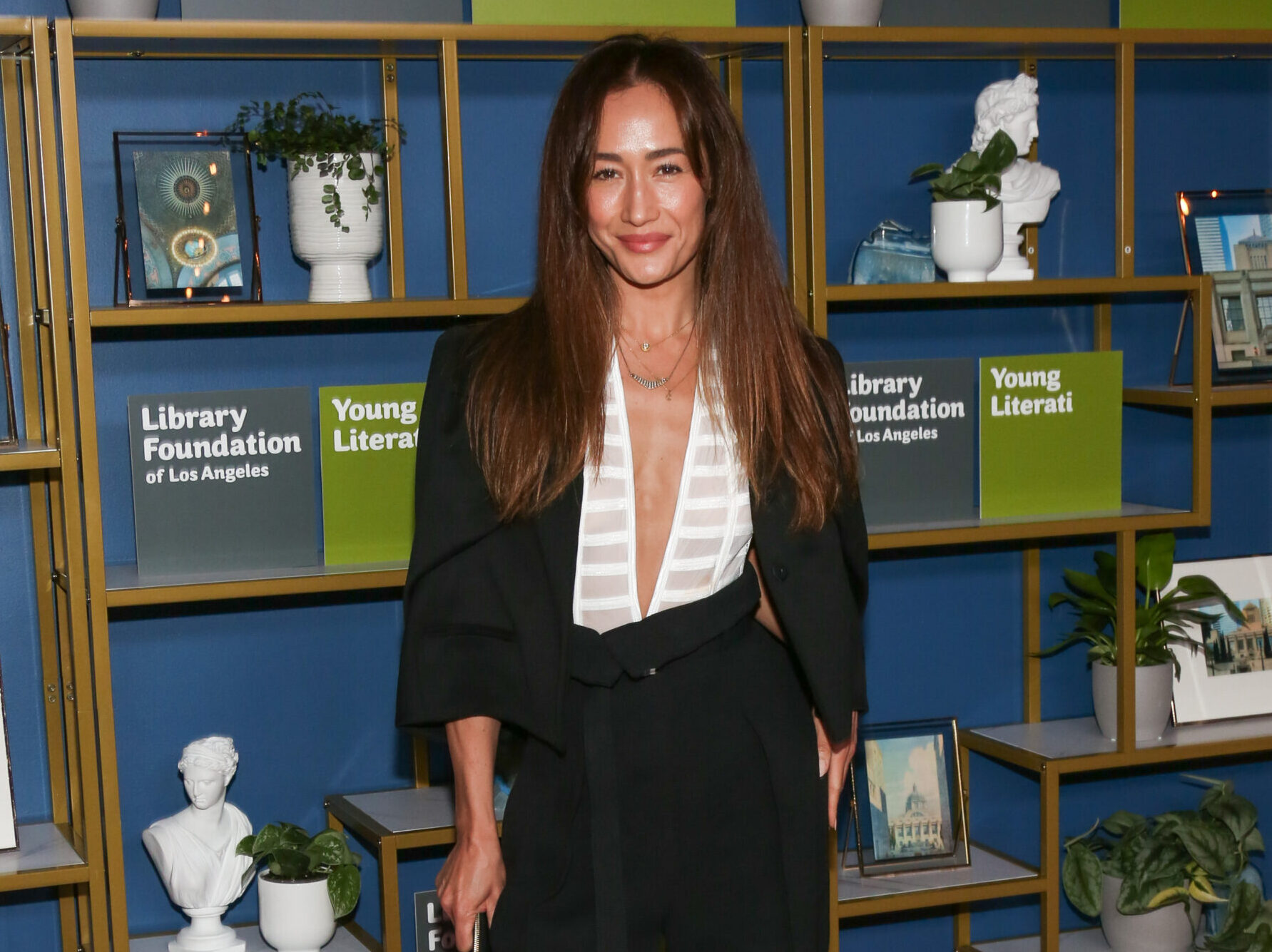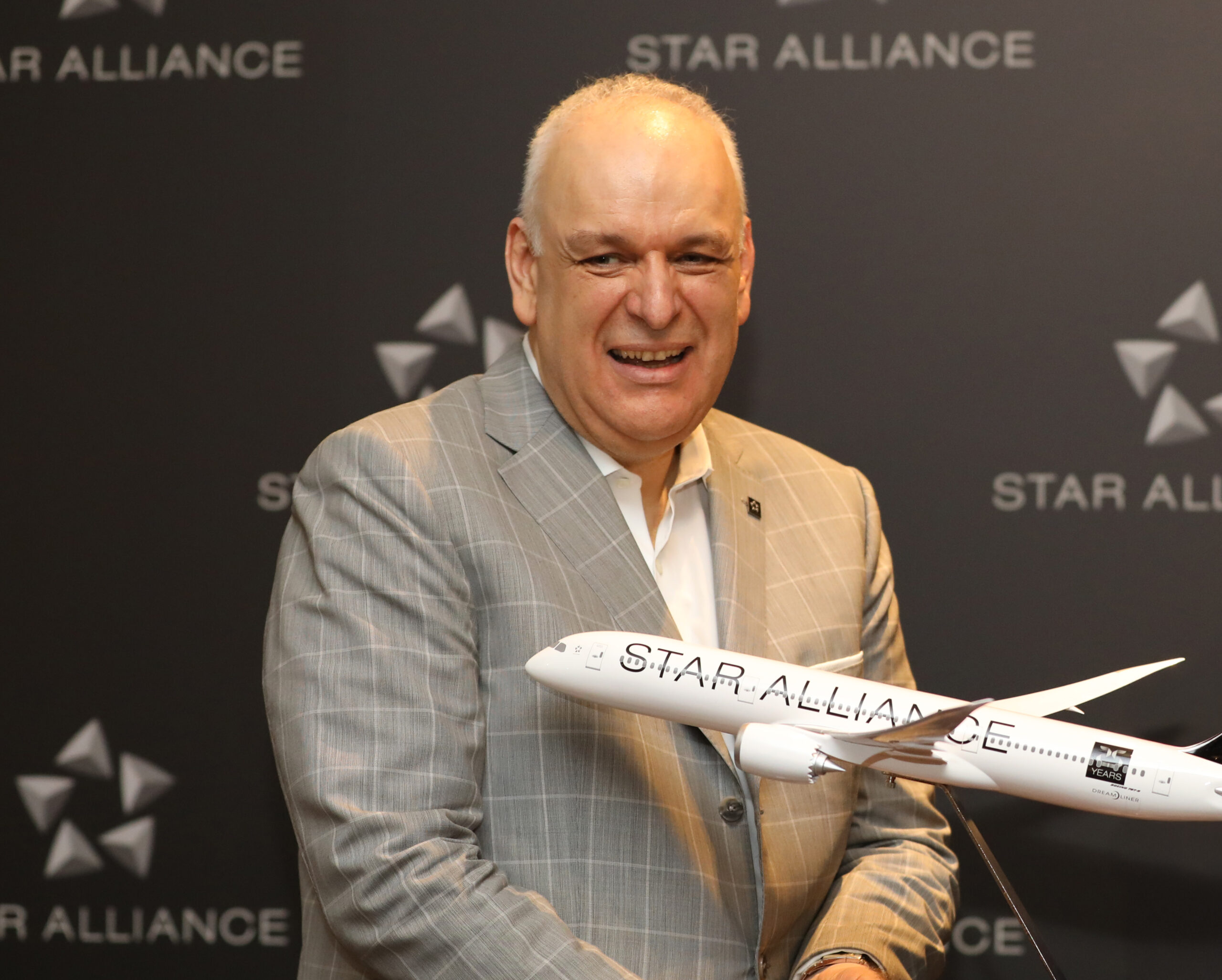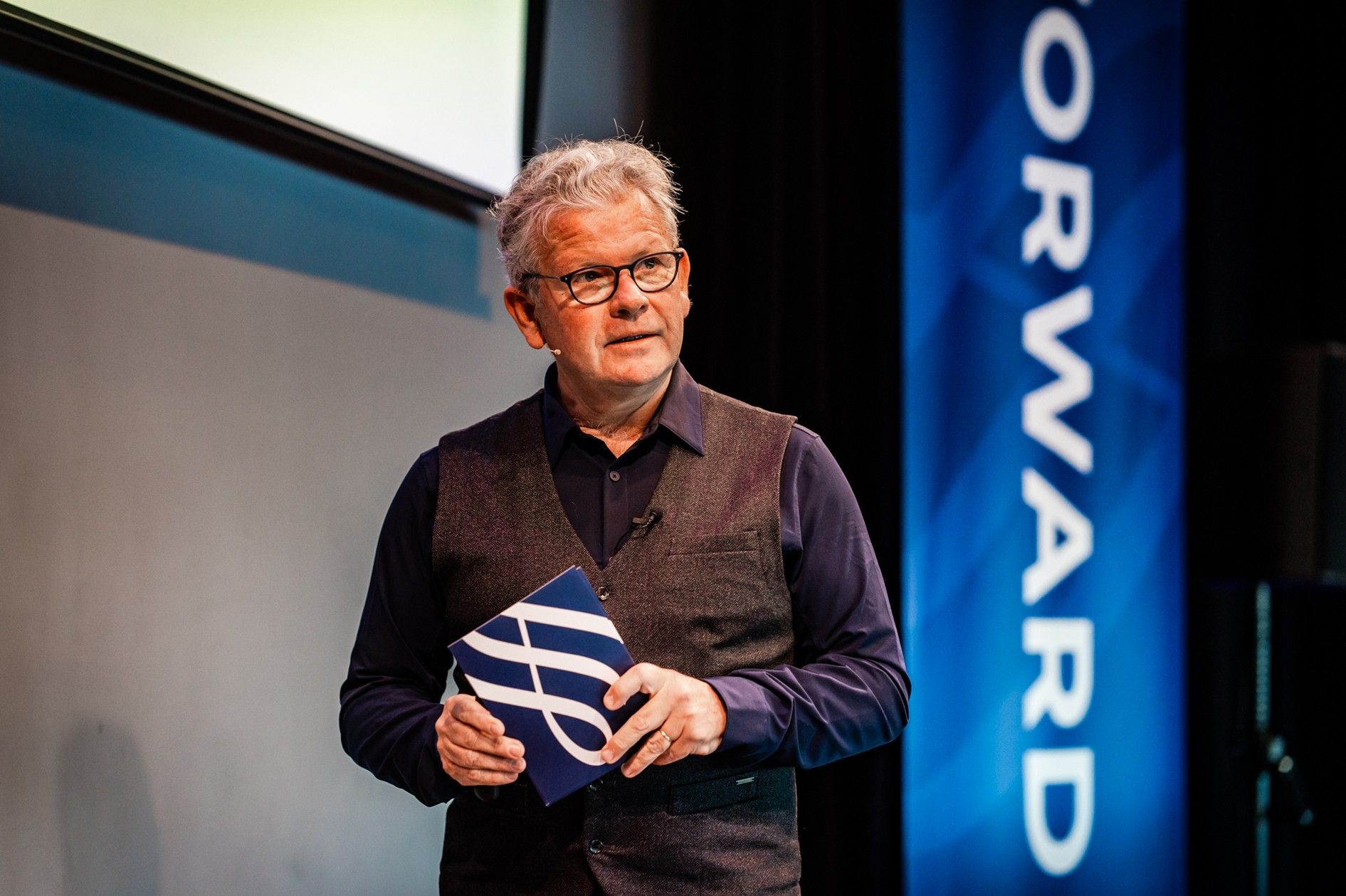Aurora James Is Revolutionizing the Fashion Industry
How the award-winning designer is fostering opportunities for Black creatives with the groundbreaking 15 Percent Pledge
June 1, 2022

Chances are you already own a pair of shoes designed by Aurora James, but an easy explanation exists for why you didn’t realize this. “When you’re an independent designer, a lot of innovation happens in developing new styles, but the reality of this business is that then the big guys, like Steve Madden or Zara, come along and knock it off and make the real money out of it,” says James, the award-winning designer of the Brother Vellies brand, who splits her time between New York and Los Angeles. “Most of America doesn’t know who I am, but in their closet they’ll find something that I designed.”
Most of America should know who Aurora James is, and not only because her artful shoes are sought after by everyone from Zendaya and Selena Gomez to Beyoncé, Michael B. Jordan and Pete Davidson. She’s also changing the product mix offered in stores by shining a light on retailers and their buying practices, in the process holding them accountable. As the founder of the 15 Percent Pledge organization, a nonprofit that urges major retailers to commit 15 percent of their shelf space to Black-owned fashion and beauty brands, she has achieved tangible results with companies including Sephora, Nordstrom and Bloomingdale’s. Her efforts have led to her being named one of Time’s 100 most influential people of 2021, as well as a Vogue cover and a place on Bloomberg’s 50 Most Influential list.
Next year James will celebrate a decade since founding her Brother Vellies brand, born after trips to Africa in 2011 revealed a wealth of artisans crafting shoes that were comfortable, stylish and reflective of their unique surroundings. “One of the earliest things I discovered was that in different regions, because there were different flowers and soil, the colors also were different,” she says. “I fell in love with the process and the idea that these leathers were being sourced from local farmers, and the whole process was hyper-local. But I also discovered that these tiny workshops, especially those in Southern Africa, were very at-risk and constantly closing, and I wanted to change that.”
Brother Vellies takes its name from the shoe that quickly became the collection’s signature, an African design known as a veldskoen, or “field shoe.” The ankle-high laced design, typically crafted of vegetable-tanned leather or rawhide, is known colloquially as a “vellie.” James discovered both the variations in design throughout Africa and their connections. “There was a brotherhood of shoes happening on that continent, and I wanted to bring that to the U.S.,” she says.
Growing up in Toronto, James was interested in fashion from an early age, partly due to the eclectic style of her mother, who introduced her daughter to global culture through a wardrobe that included everything from kimonos to Danish clogs. Canadian journalist Jeanne Beker, host of the seminal program Fashion Television, gave James her first big break. “I was the receptionist at the gym where she worked out, and one day she said to me, ‘What are you doing here, working at this gym and wearing vintage Vivienne Westwood?’” James recalls with a laugh. “I had to admit that I’d been trying to get in to see her, but she had a guy who was her gatekeeper and really hard to infiltrate, named Christopher Sherman. She told me, ‘Tell him I said so.’ I started working there a couple days later.” A Toronto-based photographer and videographer, Sherman today is one of James’ closest friends and shoots her campaigns.
She calls that period “a very curious time, because I had all these ideas in my mind. I visited costume institutes and museums with my mom, including the Bata Shoe Museum in Toronto. I had this idea that when you traveled to far-off lands, everyone would be wearing traditional cultural apparel.”
A trip to Morocco in 2011 altered that vision. “Everyone was wearing jeans by Christian Audigier, and the style was anything that emulated Cristiano Ronaldo, who was considered the ultimate fashion icon,” James says. “It floored me how much of an influence popular culture could have, even in the smallest communities. Style has devolved into a testament to consumerism, and we’re having to work harder to seek out traditional artisans.”
As James explored the abundance of craft available in African countries, increasingly she found elements that inspired her, and an idea began to take shape. “I realized that the fundamental problem was that I was coming to their country and valuing their cultural apparel; meanwhile, they were valuing what I was wearing, pieces I’d bought at a mall. I wanted to meet in the middle and celebrate what we appreciate about each other.”
Beker’s work continued to influence her protégée. “Jeanne covered fashion like a war correspondent, really hard-hitting and serious,” James says. “It helped me think critically about this industry, and how you can use it for good,” she says. “I just thought, Why not involve these artisans I was meeting in Africa? They have the same skill levels as artisans in Paris or Italy who were already being celebrated in the industry. They just had a different type of skill set and a different color of hands.”

Aurora James at the Met Gala, May 2022 / Photo: Angela Weiss/AFP via Getty Images
James started Brother Vellies with $3,500 and a boots-on-the-ground strategy that included selling at New York’s Hester Street Fair, the famed flea market for vintage and artisan finds. Capturing a spot in the CFDA/Vogue Fashion Fund, a program to assist and cultivate emerging American designers, was key to putting James and her collection in front of buyers. Today Brother Vellies is showcased primarily via its website and Brooklyn flagship, but it’s also available at Saks Fifth Avenue, online retailers and boutiques including The Webster.
Two aspects of how James developed Brother Vellies may have seemed visionary at the time, but a decade later, they’re accepted as standard practice throughout the industry. Artisanal products crafted in independent workshops is an idea that has been embraced by brands large and small, while James’ fully sustainable strategy likewise was ahead of its time. “I remember being in Fashion Fund and being afraid to say the word ‘sustainable,’” she says. “But being thoughtful about consumption has always been important to me. That’s also why we don’t do sales: It’s not about creating things and trying to put out product as fast as possible. If you as a company know that you’re never going to put your product on sale, the whole way you communicate about it is going to change, and the way you design, as well.
“Sustainability requires thinking case-by-case situationally,” she continues. “When I launched Brother Vellies I was still a vegan. And people would say, ‘Why are you using leather if you’re a vegan?’ I had to explain that it was because that was the most sustainable material you could use in the community where that particular design was produced.”
“Being thoughtful about consumption has always been important to me.”
James points to the springbok, a gazelle native to South Africa, as the ideal example. “When the call comes for the mandated culling of springbok, they hunt and eat the animal, and we take the hide versus it being thrown out,” she explains. “It’s biodegradable, and we’re sourcing it locally. Done the right way, leather can be the most sustainable thing you can do.”
The latest Brother Vellies collection also reflects James’ nontraditional approach to the fashion industry’s seasons. June typically signals the arrival of clothes collectively known as Pre-Fall, when consumers are encouraged to start thinking about autumn-friendly pieces, but James isn’t interested in that strategy. “The idea of Pre-Fall always felt a little ominous to me,” she says. “We’re at the peak of summer—let’s celebrate that.”
James indeed dubs her just debuted season High Summer, with a collection she’s calling Electric Life, rife with brilliant neon shoes, bags and boots planned with a post-pandemic world in mind. “Everyone has been experiencing this sense of joy that has come with being able to go out again. Calling the collection Electric Life says something about being loud and taking up space after we’ve had to shrink for two years.”
An elation runs throughout the collection, largely through its vivid neon hues, but also in details like a flurry of ostrich feathers in fuchsia or bright green on the open-toed Palms mule, or the thin leather straps in a shade called Electric Papaya, which wind around the ankle of a minimalist sandal. Vellies, meanwhile, remain integral to each collection. “For the first two years, we only sold that shoe,” James says. “It’s been a staple for a long time, and initially about 70 percent of our customers were men. As we expanded into other products the vellies got overshadowed a bit, but we’re planning a big resurgence of that style this fall.”
The pandemic inspired another expansion, a subscription service called Something Special, a monthly selection of artisan and ethically made home goods offered for just $35. “It was a helpful pivot because it allowed us to keep our artisans busy and gave us an opportunity to engage with our customers during a tumultuous time. But it also brought a lot of new customers into the brand.”
As James built her business, she recognized that other Black designers weren’t being afforded the same opportunities. In May 2020, at the intersection of the pandemic, the death of George Floyd at the hands of officers in Minneapolis, and the resurgence of the Black Lives Matter movement, James says she wanted to do more than join a protest. In June 2020 she founded the 15 Percent Pledge (the number references the fact that Black Americans, according to the U.S. Census Bureau, make up 15 percent of the population). Two years later, James’ work has resulted in $10 billion reaching Black-owned businesses.

Aurora James at New York Fashion Week, 2018 / Photo: Bryan Bedder/Getty Images for IMG
“Beauty retailers in particular have done an incredible job, and Nordstrom has committed to us for 10 years,” James says. “Major grocers are the next category that need to step up. Those shelf spaces are being monopolized by a lot of business that isn’t local or even being manufactured in this country, so I’m excited by the idea that one of them will come across the line this year.”
Between sourcing for Brother Vellies and working on the 15 Percent Pledge, James is almost back to her pre-pandemic level of travel, on planes almost weekly between L.A. and New York and points beyond. “Soon I’ll be in Mexico to do some sourcing for three days, and I’m hoping I’ll be in South Africa to look at materials for vellies for fall.”
In the midst of working on a memoir about her experiences, James also strives to support fellow designers, including Christopher John Rogers, Wales Bonner and Jacques Agbobly of Black Boy Knits, a finalist for the 2022 class of the CFDA/ Vogue Fashion Fund. Seven years after her own stint as a finalist, James is a Fashion Fund judge this year. And at the most recent CFDA Awards, she received the high-profile Founder’s Award, a recognition for her work on the 15 Percent Pledge.
“It was pretty incredible, but it’s never been just about me,” James says. “It’s the work of a lot of other people along the way, the amalgamation of a lot of women especially who also believed. Brother Vellies has done a good job, and it gave birth to the Pledge, but ultimately it was the audience who said, ‘Let’s run with this ball.’”




